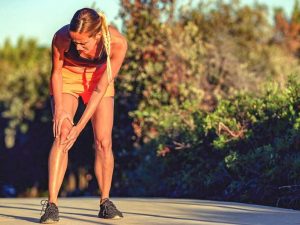The Most Common Resolution Injuries and How to Avoid Them: Achilles Pain
We’re almost done with January! The most difficult part of keeping a resolution is over. Congratulations for adopting a new way of life! We broke down shin splints, how they occur, when to exercise through the discomfort, and how to prevent them from returning in our first blog in this series. Now we’ll move down the leg to the Achilles tendon, a little but vital tendon that deserves a lot more recognition than it gets.
What Is the Function of My Achilles Tendon?
The Achilles tendon, which connects your calves to your heel, appears to many people to be a pretty insignificant tendon. While this is true, the Achilles tendon is also in charge of practically all of your foot’s movements. It is your body’s largest tendon, allowing you to walk, run, jump, and reach objects stored on the top shelf. In brief, if your Achilles isn’t in good health, you won’t be able to exercise without pain, so strengthening your Achilles is a fantastic idea!
What Are the Symptoms of Achilles Tendonitis?
Several reasons can contribute to Achilles tendon pain. Inflammation generated by calf muscle activities is the most common cause of Achilles pain. Your Achilles tendon may rupture in some cases, causing a tear in the tendon that has been compared to being shot. Obviously, there are a variety of pains that may be caused by your Achilles tendon, and they can be caused by a variety of things. Overworking the tendon, wearing the wrong shoes, and failing to stretch correctly before exercising are all factors we notice.
Relax and Enjoy Your Workouts!
Overuse is the most common injury we see in nearly all muscles and tendons, including the Achilles. Soreness is your body’s way of signaling that it has been subjected to additional stress as a result of your workout. It’s excellent to have a minor ache! However, you must take a step back when the soreness begins to cross the line into what you would consider pain. The greatest strategy to keep your Achilles pain-free while also increasing its strength is to gradually strengthen your calf muscles. Our calves are a muscle region that we often overlook in our workouts, but toning and building your calves is simple, and your Achilles will thank you.
Calf raises are the most basic exercise for your calves and Achilles. It’s as simple as standing on a step with the rear part of your foot hanging off and then getting onto your tip-toes.
The Most Common Resolution Injuries and How to Avoid Them: Achilles Pain

Your calves are another muscle group that benefits from repeated weekly workouts. You may avoid soreness and build strength by gradually increasing your Achilles strength with calf rises while avoiding overexerting your Achilles with high-impact exercise. This will allow you to increase the intensity of your workouts.
As always, if you’re having pain during your workouts, especially while running in the case of Achilles soreness, stop running and replace it with a lower-impact activity until your pain subsides.
Shoes that are both stable and flexible.
If you’ve read any of our previous blogs, you’ll know that we encourage you to select shoes that provide great support. These shoes are typically more stiff than many of the lightweight running shoes available in retailers. Your best running shoes will be firm throughout and bend at the toe box, where your feet bend. Your Achilles tendon, on the other hand, will not be able to execute its primary function of delivering movement to your feet if your shoes are too inflexible.
For a complete summary, see our guide on choosing the appropriate shoes, but as previously stated, you want shoes that are flexible near the toe box (where your laces terminate) and supportive and durable from the toe box to the heel.
Our custom orthotics are another type of support that might help with pain relief. Achilles Tendonitis is caused by overpronation of the foot during walking or jogging. When walking or jogging, our digital foot scanner and pressure mapping will tell us where your pressure points are and if your feet overpronate. We will then be able to print your custom orthotics to your exact requirements in order to assist straighten your feet and prevent overpronation.
Spend a Minute Stretching!
A basic wall stretch is one of the simplest techniques to stretch your calves and Achilles before exercising. Simply stand a few inches away from a wall and step back with one leg. Then, with your arms outstretched and both heels on the ground, rest on the wall. Switch after 30 seconds of holding. This should stretch your calves and Achilles so they don’t go into your workout feeling stiff.
The Most Common Resolution Injuries and How to Avoid Them: Achilles Pain
We hope you’re well on your way to accomplishing your New Year’s resolutions! If you’re just getting started, that’s fantastic! Make use of these pointers to keep on track and avoid being sidelined.
